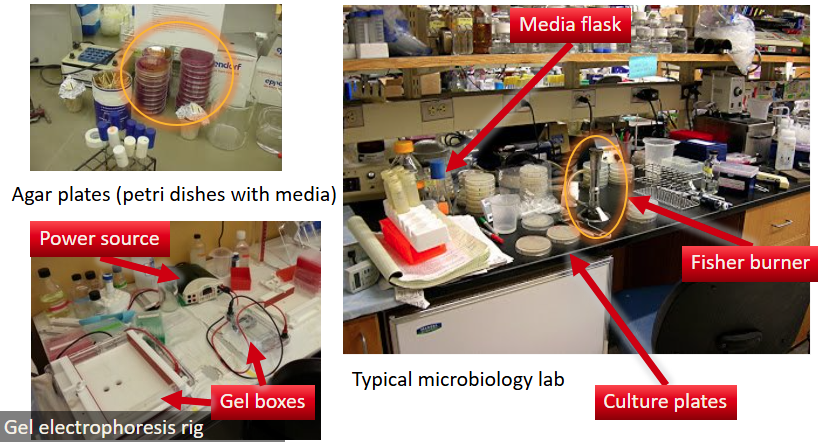You will be visiting regular labs and labs authorized for biosafety level 1 and level 2 work. However, it is also possible that while visiting a regular chemistry/wet lab you will observe equipment or items that suggest the use of biological materials that the lab is not authorized for it. Illustrated are some examples of what you might find in a lab that is using biohazardous materials. You will not be expected to determine if work in an already approved BSL-1 or BSL-2 lab is not approved and therefore a violation of the PI’s IBC approval.
The stack of petri dishes in the Exhibit A (top left) contain blood agar (a growth media for microorganisms). Petri dishes with growth media in them are called “agar plates”.

In the Exhibit B (bottom left) you see some plastic boxes connected by wires. This is an electrophoresis rig. The clear boxes contain a buffer and acrylamide or agarose gels are placed in the boxes. An electric current is applied from the power source (box with wires coming out of it toward back of picture) and DNA/RNA or protein migrates through the gel, separating it.
In Exhibit C (right), we see several indicators of biological material use. Culture plates (agar plates with microbes growing on them), agar plates, a fisher burner, and flasks with liquid media.
Many of these items when found individually, don’t necessarily indicate unregistered biological research, but when found together, may indicate unauthorized use.
Almost all work with biological materials is required to be registered with the Institutional Biosafety Committee (IBC). Your ability to accurately observe and notify the BSO about labs conducting biological research without IBC approval is an important part of our compliance monitoring network. This would be a BIOSAFETY CONCERN.